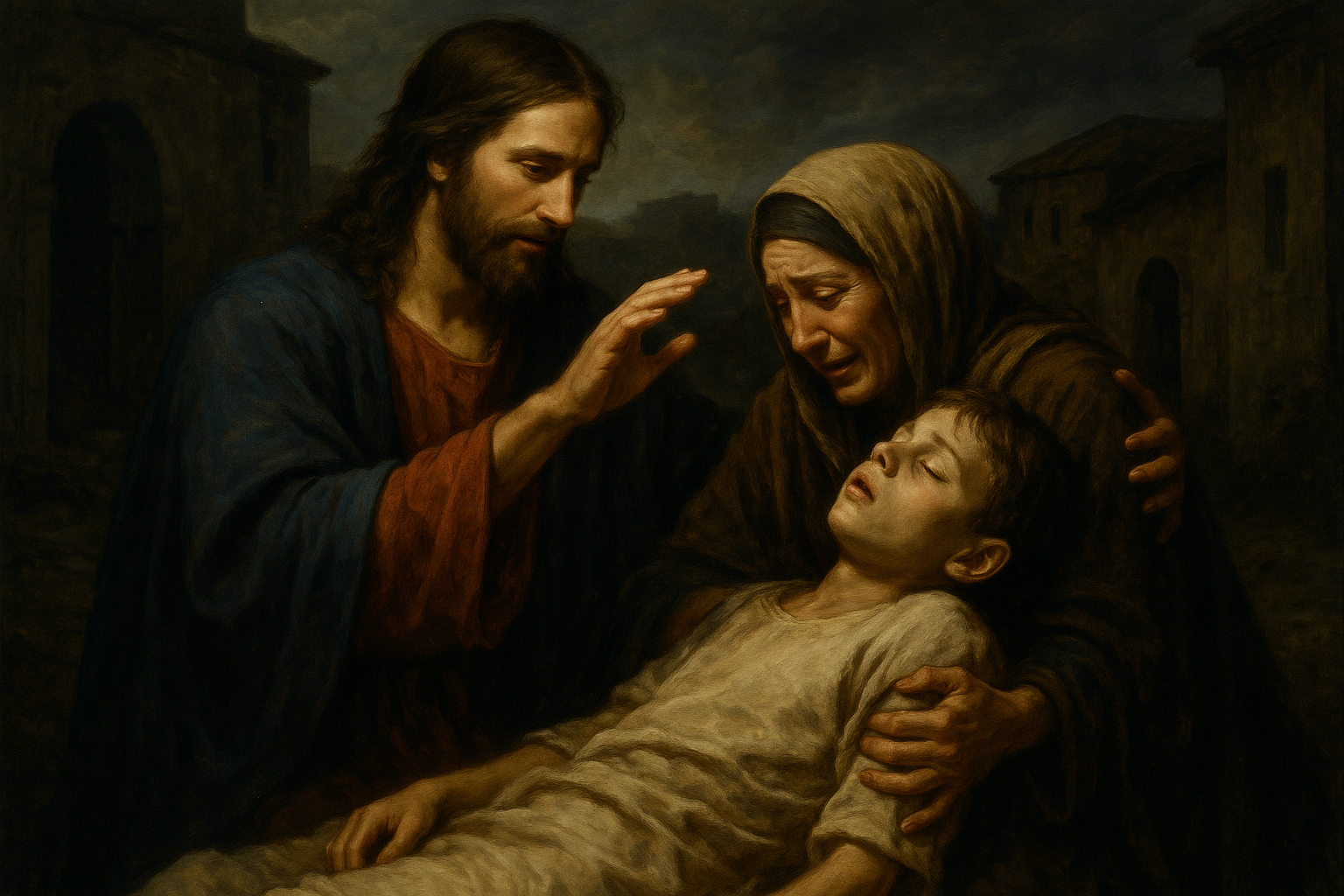Finding Grace in Unexpected Moments: Lessons from Luke 7
The Compassionate Heart of Jesus: A Look at Luke 7
In Luke Chapter 7, we find a deeply moving narrative that highlights Jesus' compassion and unparalleled mercy. The chapter starts with Jesus healing the servant of a centurion, a Roman officer who is not part of the House of Israel. This act alone is a powerful testament to Jesus' willingness to extend grace beyond the boundaries of his immediate community. It shows that compassion knows no cultural or ethnic limits.
As we continue through the chapter, we encounter another significant moment where Jesus raises a widow's son from the dead. This miracle isn't just an act of divine power; it’s a profound demonstration of empathy.
Jesus sees the grieving mother, understands her pain, and chooses to intervene. His heart goes out to her, illustrating that genuine compassion involves seeing, feeling, and acting.
The Three Stages of Compassion
One of the central themes in Luke 7 is the process of compassion that Jesus exhibits. This process can be broken down into three distinct stages: seeing, feeling, and acting.

First, Jesus sees the widow and the funeral procession. In a world often too busy to notice the suffering around us, Jesus' ability to see and acknowledge pain is a crucial lesson. It starts with awareness.
Next, Jesus feels the widow's sorrow. His heart goes out to her before he even takes physical action. This emotional connection is vital.
Feeling compassion means allowing ourselves to be moved by the suffering of others, which isn't always comfortable but is necessary for true empathy.
Finally, Jesus acts. He doesn’t stop at feeling sad for the widow; he intervenes to change her situation. This three-part process is a robust model for how we should approach compassion in our own lives.
We must see the suffering, allow ourselves to feel it, and then take action to alleviate it.
The Intersection of Life and Death
The story of Jesus raising the widow's son from the dead takes place at the town gate of Nain, a location laden with symbolic meaning. The town gate was a place where business transactions occurred, decisions were made, and social interactions took place.
It's as if life and death are meeting at this critical juncture.
Two crowds meet at this gate: one following Jesus, ascending towards the town, full of life and hope; the other following the widow, descending with grief and loss. When life and death meet, who has the right of way?
Jesus demonstrates that life, compassion, and divine intervention take precedence. By raising the young man, Jesus not only restores him to life but also gives back the widow’s hope and future.
Faith Amidst Uncertainty
John the Baptist's role in this chapter is also enlightening. While Jesus is performing miracles and proclaiming the Kingdom of God, John finds himself in prison. He sends his disciples to ask Jesus, "Are you the one who is to come, or should we expect someone else?"
This question is loaded with uncertainty.
John's predicament teaches us an essential lesson about faith. Sometimes, even the most devout believers experience moments of doubt, especially when their circumstances don't align with their expectations of divine intervention.
Jesus’ response to John is both compassionate and challenging: "Blessed is anyone who does not stumble on account of me." It’s a reminder that faith often requires trusting in God's plan, even when it doesn’t make immediate sense.
The Importance of Sharing Testimonies

Another profound lesson from this chapter is the importance of telling the whole story. When Jesus raises the widow’s son, the young man begins to talk. Although we are not told what he says, the act of speaking signifies the importance of sharing our experiences.
In our lives, we often hesitate to share our struggles until we have a triumphant conclusion. However, the process and the journey are equally important.
Sharing our testimonies, even when the story is still unfolding, can be a powerful way to connect with others and offer hope. It allows us to acknowledge God’s presence and compassion in every phase of our journey, not just at the end.
Applying the Lessons of Luke 7 in Our Daily Lives

So, how can we apply the lessons of Luke 7 in our daily lives? First, we can strive to see, feel, and act with compassion in our interactions. Whether it’s a coworker going through a tough time or a stranger in need, we can make a conscious effort to notice, empathize, and help.
Secondly, we can hold onto our faith even amidst uncertainty. Like John the Baptist, we might find ourselves questioning and doubting, but we can remember Jesus’ words and trust in His greater plan.
Lastly, we can be open about our journeys. Sharing our stories, even the unfinished and messy parts, can inspire and encourage others. It’s a reminder that we are all works in progress and that God’s grace is evident in every step of our lives.
For a deeper understanding of these lessons, I encourage you to listen to the full sermon. It’s a rich source of spiritual insight and a compelling reminder of the transformative power of compassion and faith.

